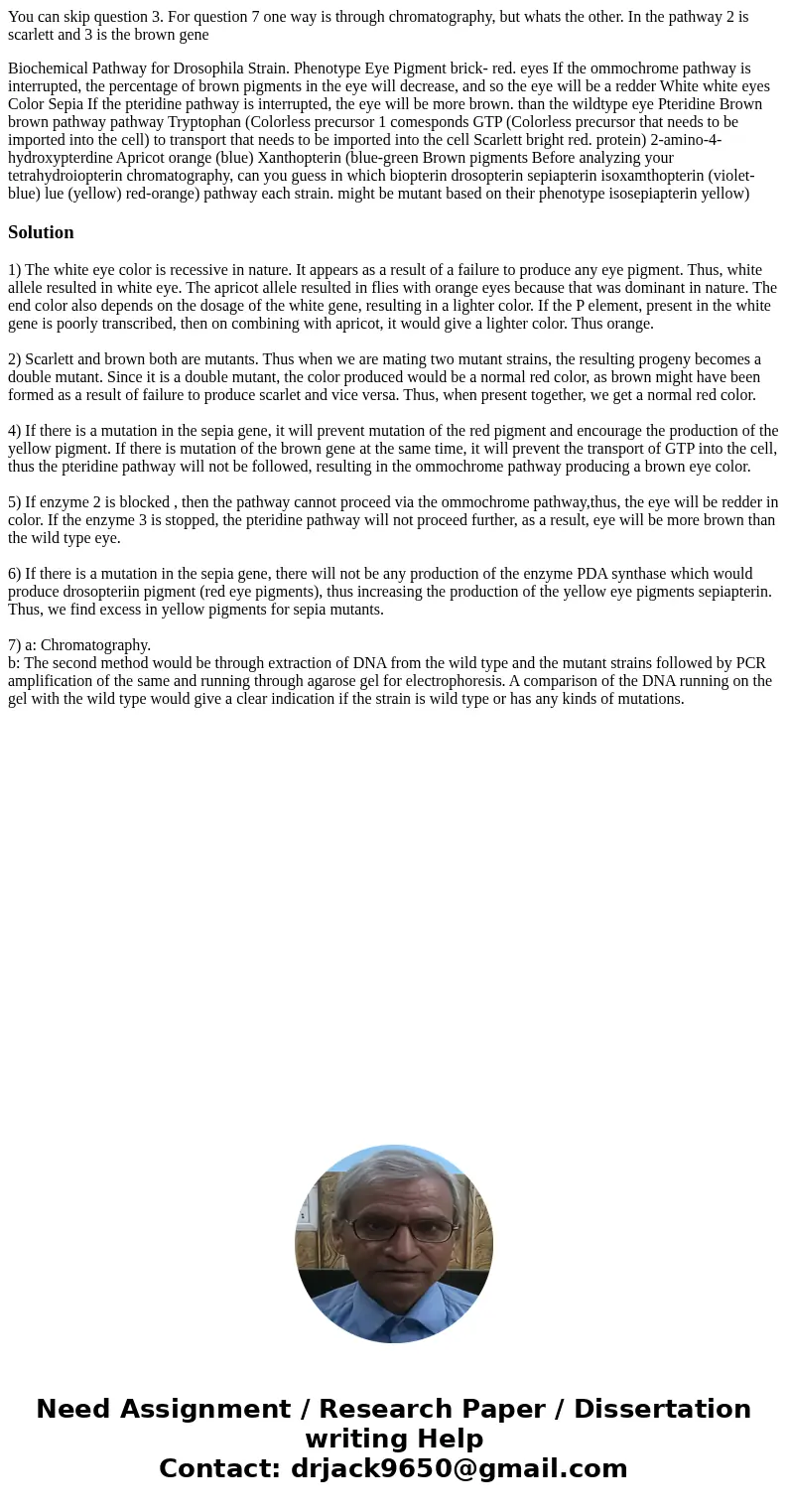You can skip question 3 For question 7 one way is through ch
You can skip question 3. For question 7 one way is through chromatography, but whats the other. In the pathway 2 is scarlett and 3 is the brown gene
Biochemical Pathway for Drosophila Strain. Phenotype Eye Pigment brick- red. eyes If the ommochrome pathway is interrupted, the percentage of brown pigments in the eye will decrease, and so the eye will be a redder White white eyes Color Sepia If the pteridine pathway is interrupted, the eye will be more brown. than the wildtype eye Pteridine Brown brown pathway pathway Tryptophan (Colorless precursor 1 comesponds GTP (Colorless precursor that needs to be imported into the cell) to transport that needs to be imported into the cell Scarlett bright red. protein) 2-amino-4-hydroxypterdine Apricot orange (blue) Xanthopterin (blue-green Brown pigments Before analyzing your tetrahydroiopterin chromatography, can you guess in which biopterin drosopterin sepiapterin isoxamthopterin (violet-blue) lue (yellow) red-orange) pathway each strain. might be mutant based on their phenotype isosepiapterin yellow)Solution
1) The white eye color is recessive in nature. It appears as a result of a failure to produce any eye pigment. Thus, white allele resulted in white eye. The apricot allele resulted in flies with orange eyes because that was dominant in nature. The end color also depends on the dosage of the white gene, resulting in a lighter color. If the P element, present in the white gene is poorly transcribed, then on combining with apricot, it would give a lighter color. Thus orange.
2) Scarlett and brown both are mutants. Thus when we are mating two mutant strains, the resulting progeny becomes a double mutant. Since it is a double mutant, the color produced would be a normal red color, as brown might have been formed as a result of failure to produce scarlet and vice versa. Thus, when present together, we get a normal red color.
4) If there is a mutation in the sepia gene, it will prevent mutation of the red pigment and encourage the production of the yellow pigment. If there is mutation of the brown gene at the same time, it will prevent the transport of GTP into the cell, thus the pteridine pathway will not be followed, resulting in the ommochrome pathway producing a brown eye color.
5) If enzyme 2 is blocked , then the pathway cannot proceed via the ommochrome pathway,thus, the eye will be redder in color. If the enzyme 3 is stopped, the pteridine pathway will not proceed further, as a result, eye will be more brown than the wild type eye.
6) If there is a mutation in the sepia gene, there will not be any production of the enzyme PDA synthase which would produce drosopteriin pigment (red eye pigments), thus increasing the production of the yellow eye pigments sepiapterin. Thus, we find excess in yellow pigments for sepia mutants.
7) a: Chromatography.
b: The second method would be through extraction of DNA from the wild type and the mutant strains followed by PCR amplification of the same and running through agarose gel for electrophoresis. A comparison of the DNA running on the gel with the wild type would give a clear indication if the strain is wild type or has any kinds of mutations.

 Homework Sourse
Homework Sourse